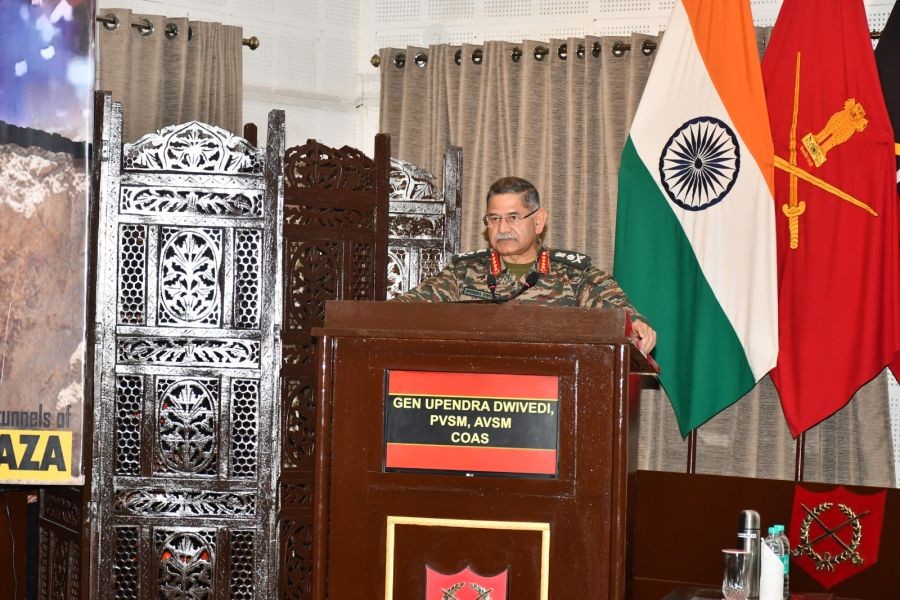In a significant address at the 26th Doctrine and Strategy Seminar (DSS) held in Mhow, General Upendra Dwivedi, the Chief of the Army Staff (COAS), emphasized the evolving nature of modern conflicts, highlighting a shift towards achieving political goals through non-military means while integrating advanced technology into military strategies. General Dwivedi characterized contemporary warfare as a continuum defined by five interconnected phases: Competition, Crisis, Confrontation, Conflict, and Combat. He articulated a vision where statecraft and diplomacy harmonize with both kinetic and non-kinetic actions.
The seminar, which spanned two days, focused on the need for adaptive military doctrines and operational philosophies that reflect the lessons learned from recent conflicts, particularly the ongoing war between Russia and Ukraine. General Dwivedi outlined several pivotal lessons from this conflict, particularly emphasizing the significance of Combined Arms Operations, the strategic use of asymmetric tactics, and the enhancement of Civil-Military Integration. These points were presented within the context of the DIME T framework, which integrates Diplomacy, Information, Military, Economic, and Technological strategies for cohesive military action.
The COAS also discussed the Decade of Transformation (2023-2032), underscoring it as a critical initiative aimed at fostering a more integrated military approach to responding to modern warfare challenges. He praised the thorough analysis presented during the seminar that addressed strategic and operational issues, reiterating the necessity of transformation and adaptation in military practices to meet the demands of contemporary conflicts.
Addressing the complexities of 5th-generation warfare, General Dwivedi highlighted the significance of non-kinetic military actions, including disinformation campaigns, cyber operations, and the deployment of artificial intelligence and autonomous systems. He noted that while newer forms of warfare are emerging, the relevance of historical warfare strategies remains steadfast. There is a growing need to integrate both non-contact and non-kinetic methods into military strategies as national security threats evolve.
The COAS elaborated on confronting national security challenges, particularly the intricacies of Grey Zone operations and the two-front challenge. He stressed the importance of synchronizing land operations with maritime and aerial strategies to safeguard India’s interests in the increasingly contested Indo-Pacific region. As adversaries adopt hybrid strategies, it is crucial for the Indian Army to revise its doctrines to effectively counter these multi-dimensional threats posed by state and non-state actors.
Recognizing the role of technology, General Dwivedi emphasized the necessity of integrating advancements like artificial intelligence, precision warfare, and cyber capabilities to facilitate multi-domain operations. He urged military leaders to remain agile in adapting to technological shifts and highlighted the importance of fostering institutional agility for rapid development and deployment of innovative technologies.
Leadership was another focal point in the COAS’s address, with a strong emphasis on its critical role in military adaptation. He described strong, adaptive leadership as vital in meeting the evolving challenges related to doctrine and technology. General Dwivedi called for a reduction in rigid doctrinal frameworks, advocating for agility, decentralization, and expedited decision-making processes, especially at the tactical level.
In closing, the COAS championed the development of adaptive doctrines that account for dynamic threat environments, technology integration, robust training methods, and realistic wargaming exercises. He advocated for a military framework that promotes jointness and interoperability with allied nations while fostering seamless cooperation between civilian and military sectors — encouraging the adoption of innovations from the private sector for military applications.
Discover more from SSBCrack
Subscribe to get the latest posts sent to your email.








